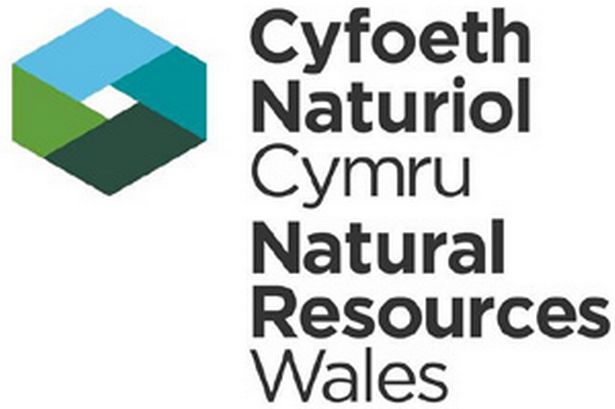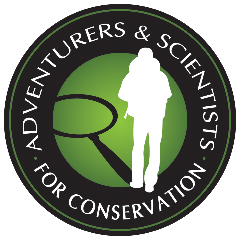Dolphins are distributed all across the world, inhabiting all the oceans and seas, except for the Caspian Sea and the Aral Sea (Dolphins-world.com, 2017). This distribution is driven by biotic and abiotic factors, they can be found living in places such as bays and estuaries, thriving in shallow and nearshore waters following food availability and generally tendency to avoid extremely colder waters. Species such as the bottlenose dolphins (Tursiops truncatus) tend to prefer coastal environments (Ingram & Rogan, 2002) since these areas provide an abundance of food as well as protection from predators. Moreover, a relationship between the distribution of several species of dolphins along the coasts of Chile has been found, with coastal upwelling zones being a hotspot for their distribution and abundance (Buscaglia, Sielfeld & Aguayo-Lobo, 2020). Coastal environments are ideal for upwelling processes to occur, particularly in bays (National Ocean Service, 2019). These regions exhibit high levels of productivity due to the retention of nutrients derived from upwelling. The extended presence of these nutrients fosters the growth of phytoplankton, creating abundant food resources for higher trophic levels (Largier, 2020). In this post, we aim to explain what exactly is upwelling and what biological processes take place during these occurrences, in order to understand its importance to life in the oceans.
Due to the earth’s constant rotation of west to east in its axis, winds are generated in both the northern and southern hemispheres. This leads to what is known as the Coriolis effect, a phenomenon in which the wind deviates to the right in the northern hemisphere and left in the southern hemisphere (National Geographic, 2023). It is this movement of wind that moves the water surface both north and south leading to upwelling and downwelling processes. These occur along the coastlines and in the open ocean, and it’s the result of the surface water being moved in an area due to the Coriolis effect (National Geographic, 2023). In upwelling systems (Figure 1), it causes the natural ocean currents to find their way up to the surface, replacing the previously removed surface water, with cold, nutrient-rich waters.
Dolphins are distributed all across the world, inhabiting all the oceans and seas, except for the Caspian Sea and the Aral Sea (Dolphins-world.com, 2017). This distribution is driven by biotic and abiotic factors, they can be found living in places such as bays and estuaries, thriving in shallow and nearshore waters following food availability and generally tendency to avoid extremely colder waters. Species such as the bottlenose dolphins (Tursiops truncatus) tend to prefer coastal environments (Ingram and Rogan, 2002) since these areas provide an abundance of food as well as protection from predators. Moreover, a relationship between the distribution of several species of dolphins along the coasts of Chile has been found, with coastal upwelling zones being a hotspot for their distribution and abundance (Buscaglia, Sielfeld and Aguayo-Lobo, 2020). Coastal environments are ideal for upwelling processes to occur, particularly in bays (National Ocean Service, 2019). These regions exhibit high levels of productivity due to the retention of nutrients derived from upwelling. The extended presence of these nutrients fosters the growth of phytoplankton, creating abundant food resources for higher trophic levels (Largier, 2020). In this post, we aim to explain what exactly is upwelling and what biological processes take place during these occurrences, in order to understand its importance to life in the oceans.

In downwelling processes, the opposite occurs, the wind pushes the surface water to build up along the coastlines, leading to its eventual sink to the bottom (National Ocean Service, 2019). These upwelling and downwelling systems are important for the earth’s climate, marine biodiversity and productivity since they help transport the heat and the nutrients present in the deep, to the upper water layers (Kämpf & Chapman, 2016).
Why are the deeper colder waters nutrient rich and why do they increase productivity?
To understand why upwelling processes are relevant we must first have an understanding of some of the biological processes occurring in the marine environment. There is a common saying that the planet´s lungs live in the forests since they are responsible for picking up and storing inorganic carbon, releasing oxygen to the atmosphere. This is true, however, the ocean produces half of the oxygen production on the planet (NOAA, 2021), and stores 50 times more carbon than the atmosphere and 20 times more than terrestrial plants (Isaacs-Thomas, 2022). This production of oxygen is achieved through photosynthesis carried out by microscopic phytoplankton, in which carbon is fixated into organic matter. Phytoplankton require light to survive and thus are found in the upper layers of the water column where light and nutrient-rich upwelled waters are available. There are seasonal changes to their numbers due to differences in light and nutrient availability, temperature, and other abiotic factors (NOAA, 2021). They are the primary producers within the ocean, the lowest trophic level and the base of aquatic food webs. This means they are the food source of many organisms, including zooplankton, small fish, and crustaceans. Consequently, these will provide food to higher trophic levels, passing on the energy produced by the primary producers and generating a complex food web that supports a wide range of marine ecosystems.
The existence of these organisms plays a crucial role in the sequestration of CO2 gases in the atmosphere and their eventual storage in the oceanic depths. This process, known as the biological pump, involves the uptake of dissolved inorganic carbon (DIC) by marine vegetation, phytoplankton, and other organisms (Pelejero & Calvo, 2007). Organisms such as corals, molluscs and crustaceans utilize DIC to build structures made of calcium carbonate. Just as it happens on land where the soil recycles organic matter, the ocean does the same, when these organisms die or shed their structures, they sink to the ocean depths, effectively removing carbon from the atmosphere, and making them excellent carbon sinks (Britannica, 2020). The microbial loop is a process in which microorganisms such as bacteria and protists recycle organic matter, releasing nutrients such as phosphorus and nitrogen in return (Mottl & Holland, 2014). These are crucial for the growth and productivity of marine organisms such as phytoplankton. These nutrients can then sink deeper into the water column, making the deep colder waters very productive and nutrient-rich; the ocean currents will keep circulating these nutrients, and upwelling processes will bring them back into the surface waters and so the cycle repeats itself!
Having explained these processes, we can have a better understanding of how our ocean works, and why upwelling processes can be so for dolphins, marine life and even humans, since they bring these nutrients from the depths back to the surface, where productivity will thrive and so will higher trophic levels.
Isabel Vizcaya
Research Intern
References
Britannica (2020). Global warming – Carbon dioxide . In: Encyclopædia Britannica. [online] Available at: https://www.britannica.com/science/global-warming/Carbon-dioxide.
Buscaglia, M., Sielfeld, W. and Aguayo-Lobo, A. (2020). Dolphins distributions (Mammalia: delphinidae) in an upwellings zone (Chile). Anales del Instituto de la Patagonia, 48(2), pp.7–28. doi:https://doi.org/10.4067/s0718-686×2020000200007.
Dolphins-world.com. (2017). Dolphin Habitat and Distribution – Dolphin Facts and Information. [online] Available at: https://www.dolphins-world.com/dolphin-habitat-and-distribution/.
Ingram, S. and Rogan, E. (2002). Identifying critical areas and habitat preferences of bottlenose dolphins Tursiops truncatus. Marine Ecology Progress Series, 244, pp.247–255. doi:https://doi.org/10.3354/meps244247.
Isaacs-Thomas, B. (2022). When It Comes to Sucking up Carbon emissions, ‘the Ocean Has Been forgiving.’ That Might Not Last. [online] PBS NewsHour. Available at: https://www.pbs.org/newshour/science/the-ocean-helps-absorb-our-carbon-emissions-we-may-be-pushing-it-too-far.
Jochen Kämpf, Chapman, P. and Springerlink (Online Service (2016). Upwelling Systems of the World A Scientific Journey to the Most Productive Marine Ecosystems. Cham: Springer International Publishing.
Largier, J.L. (2020). Upwelling Bays: How Coastal Upwelling Controls Circulation, Habitat, and Productivity in Bays. Annual Review of Marine Science, 12(1), pp.415–447. doi:https://doi.org/10.1146/annurev-marine-010419-011020.
Mottl, M.J. and Holland, H.D. (2014). The oceans and marine geochemistry. Amsterdam Elsevier C.
National Geographic (2023). Upwelling. [online] education.nationalgeographic.org. Available at: https://education.nationalgeographic.org/resource/upwelling/.
National Ocean Service (2019). What is upwelling? [online] Noaa.gov. Available at: https://oceanservice.noaa.gov/facts/upwelling.html.
NOAA (2019). Upwelling in coastal environment. ‘This graphic shows how displaced surface waters are replaced by cold, nutrient-rich water that “wells up” from below. Conditions are optimal for upwelling along the coast when winds blow along the shore’.
NOAA (2021). How Much Oxygen Comes from the ocean? [online] oceanservice.noaa.gov. Available at: https://oceanservice.noaa.gov/facts/ocean-oxygen.html.
Pelejero, C. and Calvo, E. (2007). Elderfield, H. (ed.) The Oceans and Marine Geochemistry. Scientia Marina, 71(1), pp.207–208. doi:https://doi.org/10.3989/scimar.2007.71n1207.
























